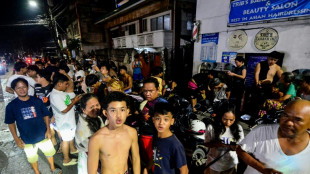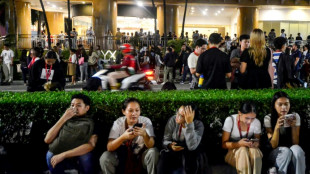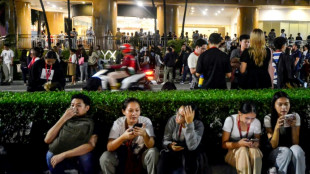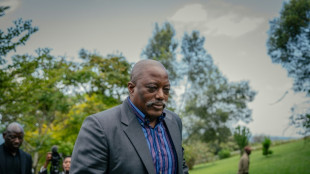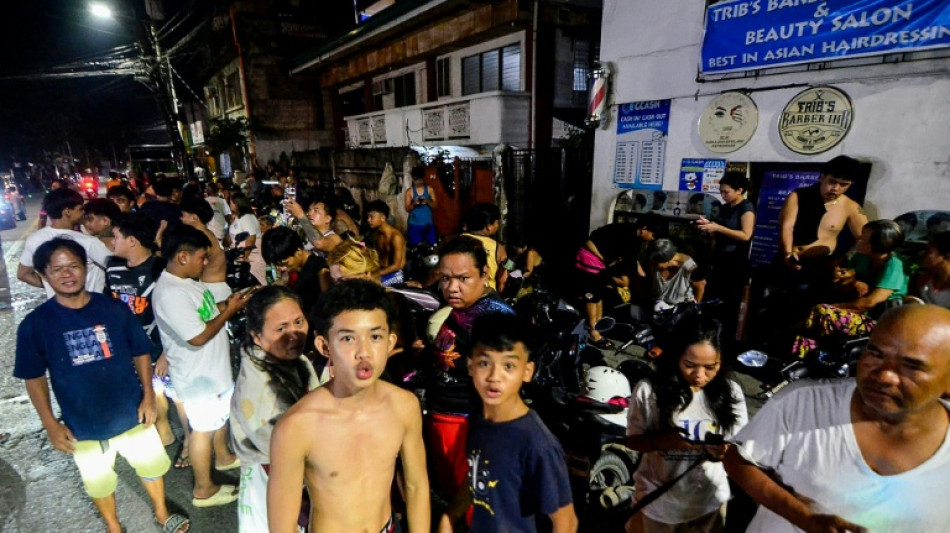

Strong quake in central Philippines kills 19 as search ongoing
A powerful 6.9-magnitude earthquake jolted the central Philippines, collapsing buildings and killing at least 19 people on the island of Cebu, authorities said early Wednesday, with fears the toll could rise as rescuers searched for survivors.
The shallow quake struck at 9:50 pm (1359 GMT) Tuesday off the island's northern end near Bogo, a city of 90,000 people, according to the US Geological Survey (USGS).
Nine adults and four children were killed in Bogo, including three whose homes were buried in landslides, local rescuers told AFP.
Five more deaths were confirmed by local police in the nearby municipality of San Remigio, along with one in Tabuelan.
Four bodies were pulled from a sports centre in San Remigio, including three coastguard members who were playing at a local basketball tournament when the roof collapsed, local rescuers told AFP. A child was crushed by debris in another area of San Remigio, they added.
The Cebu provincial government has put out a call on its official Facebook page for medical volunteers to assist in the aftermath of the quake.
"There could be people trapped beneath collapsed buildings," provincial rescue official Wilson Ramos told AFP, citing rescue efforts underway in San Remigio and Bogo. He said he did not know how many people were missing.
Overnight recovery efforts were hampered by the dark as well as aftershocks, he added.
The rescue effort proceeded all night even as the Philippine Institute of Volcanology and Seismology said the region was being rocked by 379 aftershocks.
A number of village roads also sustained damage.
The quake caused power lines to trip, leading to outages across Cebu and nearby central islands, though power was restored shortly after midnight in Cebu and four other major central islands, the National Grid Corp. of the Philippines said in an updated advisory.
Cebu firefighter Joey Leeguid told AFP from San Fernando town: "We felt the shake here in our station, it was so strong. We saw our locker moving from left to right, we felt slightly dizzy for a while but we are all fine now."
- 'In shock' -
Martham Pacilan, a 25-year-old resident of the resort town of Bantayan, also near the epicentre, said he was at the town square near a church, which was damaged by the quake.
"I heard a loud booming noise from the direction of the church then I saw rocks falling from the structure. Luckily no one got hurt," he told AFP.
"I was in shock and in panic at the same time but my body couldn't move, I was just there waiting for the shake to stop."
Agnes Merza, a carer based in Bantayan, said her kitchen tiles had cracked.
"It felt as though we would all fall down. It's the first time I have experienced it. The neighbours all ran out of their homes. My two teenage assistants hid under a table because that's what they were taught in the boy scouts," the 65-year-old told AFP.
The Cebu provincial government reported a commercial building and a school in Bantayan had collapsed, while a fast food restaurant in Bogo was heavily damaged.
In a live video message on her official Facebook account, Cebu provincial governor Pamela Baricuatro urged residents to "stay calm and move to open areas; keep away from walls or structures that may collapse and stay alert for aftershocks."
The USGS had reported a magnitude reading of 7.0, before revising it down, while the Pacific Tsunami Warning Center said there was no tsunami threat from the earthquake.
Quakes are a near-daily occurrence in the Philippines, which is situated on the Pacific "Ring of Fire", an arc of intense seismic activity stretching from Japan through Southeast Asia and across the Pacific basin.
Most are too weak to be felt by humans, but strong and destructive ones come at random, with no technology available to predict when and where they might strike.
Q.Kulkarni--MT

